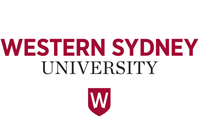Campbelltown City
About the profile areas
The 2023 Estimated Resident Population for Campbelltown City is 184,784, with a population density of 593.2 persons per square km.
Location and boundaries
Campbelltown City is located in Sydney's south-western suburbs, between 30 and 55 kilometres from the Sydney CBD. Campbelltown City is bounded by Liverpool City in the north, Sutherland Shire and Wollongong City in the east, Wollondilly Shire in the south, and the Camden Council area in the west. Campbelltown City's boundaries are Denham Court Road, Campbelltown Road, Glenfield Road, the Georges River and a line through the Holsworthy Military Reserve in the north, Williams Creek, Lake Woronora and the Woronora River in the east, a section of O'Hares Creek and a line through the Dharawal National Park to the Nepean River in the south, and the Nepean River, a line through the Mount Annan Botanic Garden and a line running generally northward to Denham Court Road in the west.
Traditional Owners
The original inhabitants of the Campbelltown area were the Dharawal Aboriginal people.
Name origin
Campbelltown was named by Governor Lachlan Macquarie in honour of his wife, Elizabeth Campbell.
Important
|
Population184,784 2023 ABS ERP |
Land area311.5 square km |
Population density593.2 persons per square km |
Settlement history
European settlement dates from the early 1800s, with land used mainly for agriculture, particularly wheat farming, sheep grazing and dairy farming. Significant development did not occur until the post-war years. Up until the 1960s the area was predominantly rural, with settlements located at Campbelltown, Glenfield, Ingleburn and Minto. This changed rapidly from the late 1960s as significant residential and employment growth took place, including State Government housing projects in Airds, Claymore, Macquarie Fields and Minto. Rapid growth took place during the 1970s and 1980s. The population of the City increased slightly during the 1990s, rising from nearly 138,000 in 1991 to over 145,000 in 2001. The population then declined slightly, falling to about 142,000 in 2006, before increasing again to about 146,000 in 2011.
Land use
Campbelltown City is a residential and rural area, with substantial commercial and industrial areas. The City encompasses a total land area of about 310 square kilometres.
Transport
Campbelltown City is served by the Hume Highway and the Macarthur railway line.
Major features
- Major features of the City include The Mall Campbelltown,
- Macarthur Square Shopping Centre,
- The Campbelltown,
- Ingleburn and Minto industrial areas,
- Campbelltown Hospital,
- University of Western Sydney (Campbelltown Campus),
- TAFE NSW South Western Sydney Institute (Campbelltown and Macquarie Fields Colleges),
- Campbelltown Sports Stadium,
- Menangle Park Paceway,
- Campbelltown Athletics Centre,
- Campbelltown Golf Club,
- Macarthur Grange Country Club,
- Macquarie Links International Golf Course,
- part of the Holsworthy Military Reserve,
- Mawson Park,
- Koshigaya Park,
- Japanese Tea House & Art Gallery,
- part of Dharawal National Park,
- part of Lake Woronora (Woronora Dam),
- The Nepean River and the Georges River.
Included areas
- Campbelltown City includes the suburbs and localities of Airds,
- Ambarvale,
- Bardia,
- Blair Athol,
- Blairmount,
- Bow Bowing,
- Bradbury,
- Campbelltown,
- Claymore,
- Denham Court (part),
- Eagle Vale,
- Englorie Park,
- Eschol Park,
- Gilead,
- Glen Alpine,
- Glenfield,
- Gregory Hills (part),
- Holsworthy (part),
- Ingleburn,
- Kearns,
- Kentlyn,
- Leumeah,
- Long Point,
- Macquarie Fields,
- Macquarie Links,
- Menangle Park,
- Minto,
- Minto Heights,
- Mount Annan (part),
- Raby,
- Rosemeadow,
- Ruse,
- St Andrews,
- St Helens Park,
- Varroville,
- Wedderburn,
- Woodbine and Woronora Dam (part).
